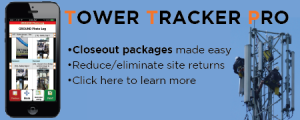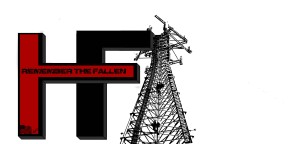Podcast: Play in new window | Download | Embed
Subscribe: Apple Podcasts | RSS
The Internet of Things, IoT, is more than a buzz word, it is the way things are moving. When you hear of 5G they often talk of IoT and how everything will be connected. This is very exciting but the technology is already here. It is being tested and proven as we speak. So what should deployment teams be doing now? They should prepare to deploy!
Kathy over at Tower Safety and Instruction is having a contest where you can win a $100 gift card from Home Depot if you can provide the best caption for her picture, found at http://towersafety.com/get-ready-enter-tower-safety-super-team-contest/ so enter ASAP because it ends August 31st, 2016!
By the way, if you’re interested in IOT and you want to learn more about the smart home and IOT devices, there is a great podcast by Stacey Higginbotham and Kevin Tofel called “The IOT Podcast”, found here, http://iotpodcast.com/ and learn even more about the IOT industry.
You might remember that I put together another blog about IOT needs wireless, found here.
The Wireless Deployment Handbook eBook that covers  professional carrier end to end deployment of LTE small cells, CRAN, and DAS showing you the proper way to plan for deployment then execute.
professional carrier end to end deployment of LTE small cells, CRAN, and DAS showing you the proper way to plan for deployment then execute.
The thing about industrial IoT is that it will take skilled professionals to install it and test it. There will also be software to make sure that it works, it will take calibration and testing for these systems to be deployed. Specifically when buildings need their systems monitored heating and cooling and water. That’s right! They have water sensors to make sure a leak doesn’t happen in a building. Many industrial companies are going beyond tracking what they have and getting proactive.
Newsletter sign-up!
Subscribe–> iTunes or Stitcher or Overcast
Do you think it only applies to buildings? I know you have heard of  the connected car but industrial equipment manufacturer CAT has a system that works over LTE, video found here, that has automated the large vehicles and monitor all aspects of them. It is really amazing.
the connected car but industrial equipment manufacturer CAT has a system that works over LTE, video found here, that has automated the large vehicles and monitor all aspects of them. It is really amazing.
They use it for mining to safe on the workers but it is as safe as it can be in that environment. It is really amazing.
IoT can be almost anything so make sure you understand what the deployment teams will need to do. For instance, residential IoT will probably be the simple things, like thermostats and refrigerators that can be connected by the homeowner. Alarm companies will add 
So for the deployment teams to install this equipment, they should be ready to connect everything outside or inside. Let’s look outside where we could connect street lamps, traffic lights, traffic counters, utility meters, or anything that would be read or controlled in real-time. Like I said, CAT is already controlling heavy equipment at mines. Imagine when all the vehicles will need to be controlled. We have the use of drones for delivery being contemplated, and it won’t happen on Wi-Fi for a large network, it will be LTE. On these networks we will also have video, although that is not IoT, it will be on a similar network and tied the usage. If you think they can see everything now, wait until they put cameras on drones and deploy on a wide scale here in North America.
Indoors is another story. You could have what I mentioned for residential along with the industrial applications like control of equipment. Meters will need to be read in business buildings so that the program can adjust industrial controls as needed. It will all depend on how they want to control the system indoors. I could see Wi-Fi unless they need batteries then the other formats may be needed. I know that Wi-Fi is coming out with the new devices that have better battery usage. Now, Wi-Fi drains your battery but it’s so convenient.
A quick overview of IoT protocols:
- Wi-Fi HaLow – The Wi-Fi Alliance has come out with HaLow, the indoor Wi-Fi format for IoT which uses 900MHz to improve indoor coverage. It will also have better battery life. 900MHz has less spectrum, but remember that most devices send very short message with data and control information. This is why video is not considered part of IoT but it will be expected to run on normal Wi-Fi. The problem with normal Wi-Fi will be battery life. However, Wi-Fi for normal IoT apps will be the most commonly accepted but security may be an issue. The idea here is that the 900MHz will not be running all the time so it will only wake up your device when it has to, not running on 2.4GHz and 5.8GHz which is probably running all the time.
- Bluetooth – They are trying this but there are connectivity issues, range issues, and reliability issues. So far it’s not really taking off. Battery life is still an issue.
- Bluetooth Smart – low energy Bluetooth to improve the battery life of devices and to improve the IoT connections. Peer to peer, short-range, 2.4GHz,
- Z-Wave – proprietary protocol owned by Sigma Designs, 40Kbps and 9.6Kbps and 100Kbps, up to 4 hops, up to 40meters, 908.42Mhz in US, using 20Khz to 110 kHz of bandwidth,
- Thread – a type of indoor low power mesh network that many devices used that are made by NEST. They basically have their own equipment on this 802.15.4 format. http://threadgroup.org/
- ZigBee – Indoor format, mesh, 802.15.4, open standard if you join the ZigBee alliance, normally 10-30 nodes but in theory could do up to 2,000 nodes. 20Kbps in 868MHz band, 40Kbps in 915MHz band, 250Kbps in 2.4GHz band, less than 400m range, longer range lowers battery life
- DECT ULE – Indoor format, Ultra Low Energy using Digital Enhanced Cordless Telecommunications protocol, less than 50m range, up to 1Mbps, up to 400 devices on the network, 1920 to 1930MHz in USA and Canada
- Sigfox UNB – outdoor, Sigfox Ultra Narrow Band, 3GPP GERAN, average range 30 to 50Km depending on-line of site, 928MHz in USA, 150mWatt unit in the USA, used in older devices
- Semtech’s LoRa – Long Range, outdoor protocol, Open Source, STAR topology, no upper limit on devices, 300bps at long-range typically 1Kbps, 2-5Km range, 80MHz with 125 KHz bandwidth. Low-power sensors can be used in streetlights, gas cylinder level sensor, parking sensors, etc.
- LTE – outdoor format, this could be in any LTE band but the problem with LTE is that it’s made for large packets, so there is development underway for smaller bandwidth applications. Ideal format for wide area because every carrier has LTE but needs to improve battery life if a remote device is not connected to power.
Resources:
http://www.lprs.co.uk/assets/media/Rethink%20IoT%20Wireless%20Market%20overview.pdf
http://www.3gpp.org/news-events/3gpp-news/1607-iot
http://www.wired.com/2016/01/wifi-halow-internet-of-things/
http://www.techrepublic.com/article/802-11ah-wi-fi-protocol-for-iot-solves-two-m2m-problems/
http://electronicdesign.com/iot/understanding-protocols-behind-internet-things
Be smart, be safe, and pay attention!
TOWER CLIMBING: AN INTRODUCTION (The book about getting started as a tower climber)
Do you know what to put in your SOW, the details needed to get paid for milestones or job completion? Would it hold up in claims court? Would you rather plan up front instead of fighting for it after the job is done?




